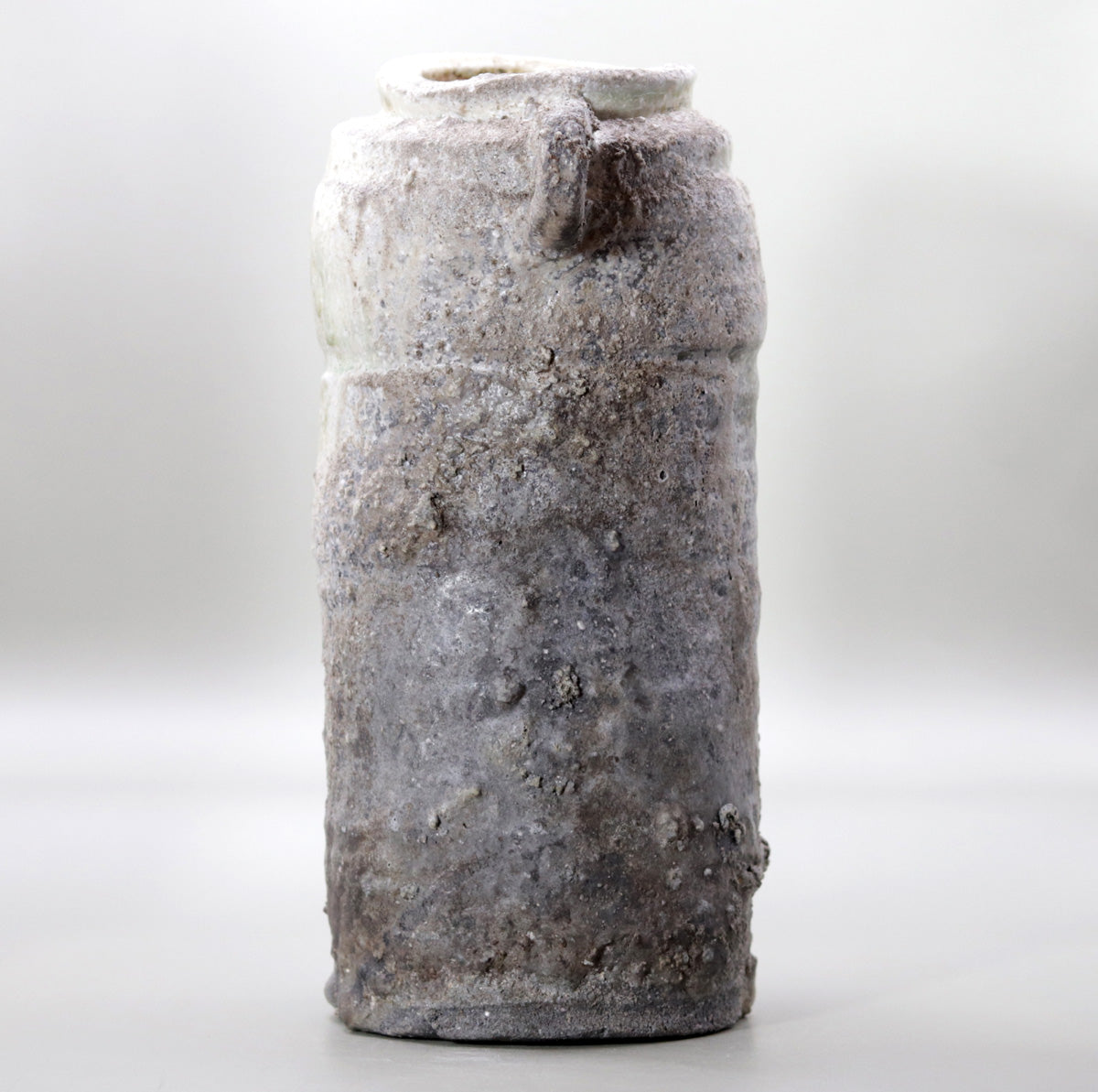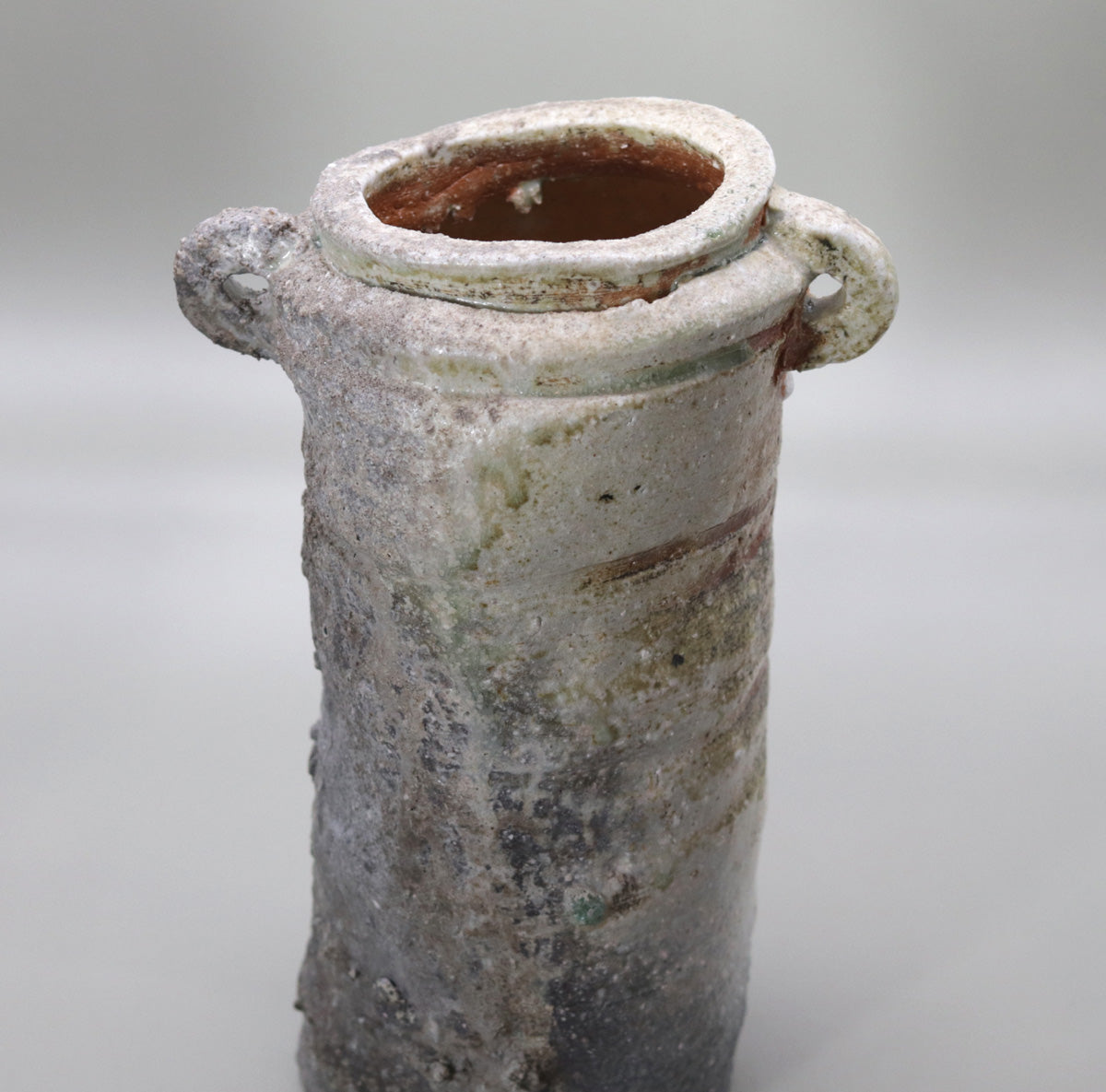Iga Yohen Flower Vase with Ears by Hideki Yanashita
Iga Yohen Flower Vase with Ears by Hideki Yanashita
Couldn't load pickup availability
Width 14.0cm Height 26.0cm
The will of the shape lies in the distortion
This work, Iga Kiln-Transformed Eared Vase, follows the traditional form of Iga ware, but the artist's clear intention for its design can be felt everywhere. In particular, the distortions and scrapes on the body are not merely coincidence or the result of handwork, but are the result of thorough consideration of the balance of the shape of the vessel. The mouth is fitted with a rounded, bulging koujiguchi (a tangerine-shaped opening), and symbolic ears are attached to both sides. Similar shapes can be found in old Iga, but this work is not a reproduction of those, but an interpretation and reconstruction from a modern perspective.
Kiln transformation and firing control
Due to the way the flame hits the piece during firing and the fall of ash, different appearances appear on the front and back of the piece. The front has a strong fire color due to the firing process, while the back has a slight green color. Both are the result of carefully calculated positioning in the kiln and adjusting the firing conditions, and are not so-called "products of chance." These appearances can only be created by the ability to read the flames and accumulated firing experience.
The history of Iga ware and the position of this piece
Iga ware is a type of pottery that made great advances as tea ware during the Azuchi-Momoyama period, and many masterpieces were created under the guidance of the military commander and tea master Furuta Oribe. It is characterized by highly artificial designs such as wavy cuts (yamado-te), lattice patterns, selvedge, dents, green glaze (vidro), ash covering, and scorching. All of these have supported the aesthetic beauty of the tea ceremony as "beauty of unconventional harmony."
This work clearly follows that lineage, but it is not a simple imitation of an older work; it is the result of a search for the ideal form of Iga ware in the modern era. The shape, scenery, and balance of the vessel refer to the typical forms of old Iga, but have a more sculptural power.
The function and visual effect of a vase
As a vessel for flowers, the curved body and bulging mouth are structural elements that bring out the movement of the flowers. The curved body guides the eye, and the contrast between the height and width of the vessel gives a unique sense of movement and space to the arrangement of flowers. The way the view behind the vessel changes as it receives light also greatly alters the impression of the vessel depending on the installation environment, leaving plenty of room for it to respond to the user's design intent.
The design philosophy of Toki Yanagishita
Toki Yanagishita is a contemporary ceramic artist who continues to create at his own Kanda Kiln in Iga, Mie Prefecture. While focusing on Momoyama pottery such as Yakishime, Raku ware, and Oribe, he examines the historical and expressive possibilities of each technique and elevates them into contemporary artistic expression. In this work, too, traces of a reinterpretation of the vocabulary of ancient Iga with a modern sense of form are clearly visible. Another major feature of Yanagishita's work is that the vessels are not simply objects to be viewed, but are formed as "functional objects" that are completed only when flowers are placed in them and used. While ``Iga Kiln-Transformed Eared Vase'' is based on the traditional formative elements of Iga ware, it is a work that pursues both use and viewing, rather than simply quoting them. The vessel is highly complete, and the control of the scenery through firing, the intention of the form, and an understanding of the materials are all integrated, making it a work that quietly presents the possibilities of Iga ware in the present day.
Hideki Yanashita Profile
Ceramicist 1967 –
Born in Tokyo, Yanagishita is currently based in Iga, Mie Prefecture. Fascinated by pottery from the Momoyama period, he embarked on the path of ceramics. After training in Shigaraki, he built his own anagama kiln in Iga, Mie Prefecture, and opened the Kanda Kiln. Under the tutelage of Sadamitsu Sugimoto, Yanagishita has been creating a wide variety of works , including Raku ware, Yakishime, Ido, and Oribe, while deeply exploring the world of wabi-sabi from his own unique perspective. An important theme in Yanagishita's creations is the quest for new heights , born from the incorporation of modern materials and unique approaches while deeply studying the techniques and spirit of his predecessors. His works question essential beauty that is timeless, and invite the viewer into a deeper world of art.
Base of operations : Iga, Mie Prefecture
Share







Multi-Column
-
[I will send it to you quickly and carefully]
We carefully package each product in a way that suits it best.
Also, delivery times vary depending on the piece (vessel, etc.).
Items that already come with a box will be shipped within 1-3 days of the order date.
For items that require a box to be made after your order, it will take approximately 30 days for production to be completed and then shipped.
In either case, once we have confirmed your order, we will contact you by email to inform you of the delivery date.
-
[Requests when purchasing pottery]
Even products that look the same may differ slightly in color, shape, size, etc.
The way the glaze is used, the power of the kiln, the firing method, the season, and the humidity also affect the appearance of the pottery.
Please understand the individuality of each piece of pottery and enjoy the unique warmth of handmade.







